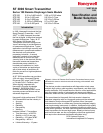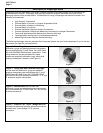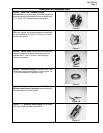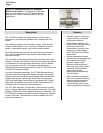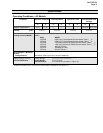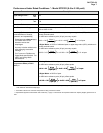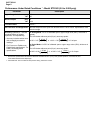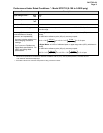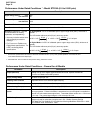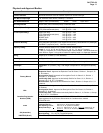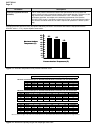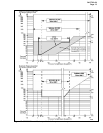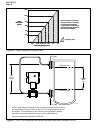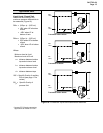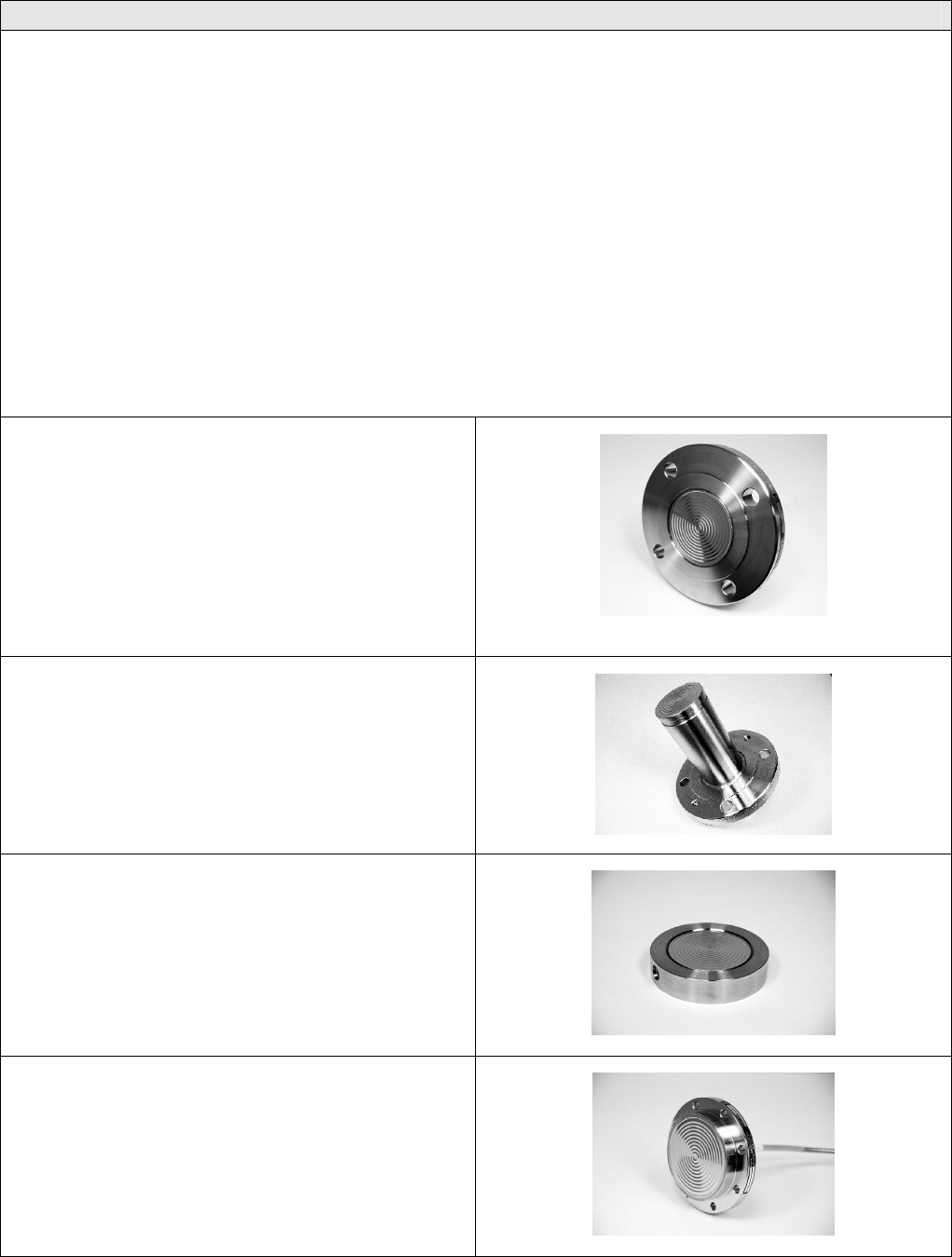
34-ST-03-64
Page 2
Description of Diaphragm Seals
Diaphragm seals are traditionally used when a standard pressure transmitter should not be exposed to the
process pressure directly. Diaphragm seals typically protect the pressure transmitter from one or more
damaging aspects of the process media. Consideration for using a diaphragm seal should be made in the
following circumstances.
• High Process Temperature
• Process Media is Viscous or Contains Suspended Solids
• Process Media is Subject to Solidifying
• Process Media is Corrosive
• Process Application Requires Sanitary Connections
• Process Application Subjects the Measuring Instrument to Hydrogen Permeation
• Tank Level Applications with Maintenance Intensive Wet Legs
• Tank Application with Density or Interface Measurements
• Measuring Instrument Requires Remote Mounting
The following diaphragm seals are standard from Honeywell (please call your local salesperson if you do not see
the product you need for your application):
Figure 2 - Flush Flange Seals can be used with
differential, gauge and absolute pressure transmitters
and are available with 3” ANSI Class 150, ANSI Class
300 and DIN DN80-PN40 process connections. Flush
flange seals can also be provided with Lowers.
Lowers are essentially calibration rings, which allow
flushing connections if needed – see Figure 31.
Figure 2
Figure 3 - Flange Seal with Extended Diaphragm
can be used with differential, gauge and absolute
pressure transmitters and are available with 3” and 4”
ANSI Class 150, ANSI Class 300, DIN DN80-PN40
and DIN DN100-PN40 process connections. 2”, 4” and
6” extension lengths are available.
Figure 3
Figure 4 - Pancake Seals can be used with
differential, gauge and absolute pressure transmitters
and are available with 3” ANSI Class 150, 300 and 600
process connections.
Figure 4
Figure 5 - Chemical Tee “Taylor” Wedge seals can
be used with differential pressure transmitters and are
available with Taylor Wedge 5” O.D. process
connection.
Figure 5



